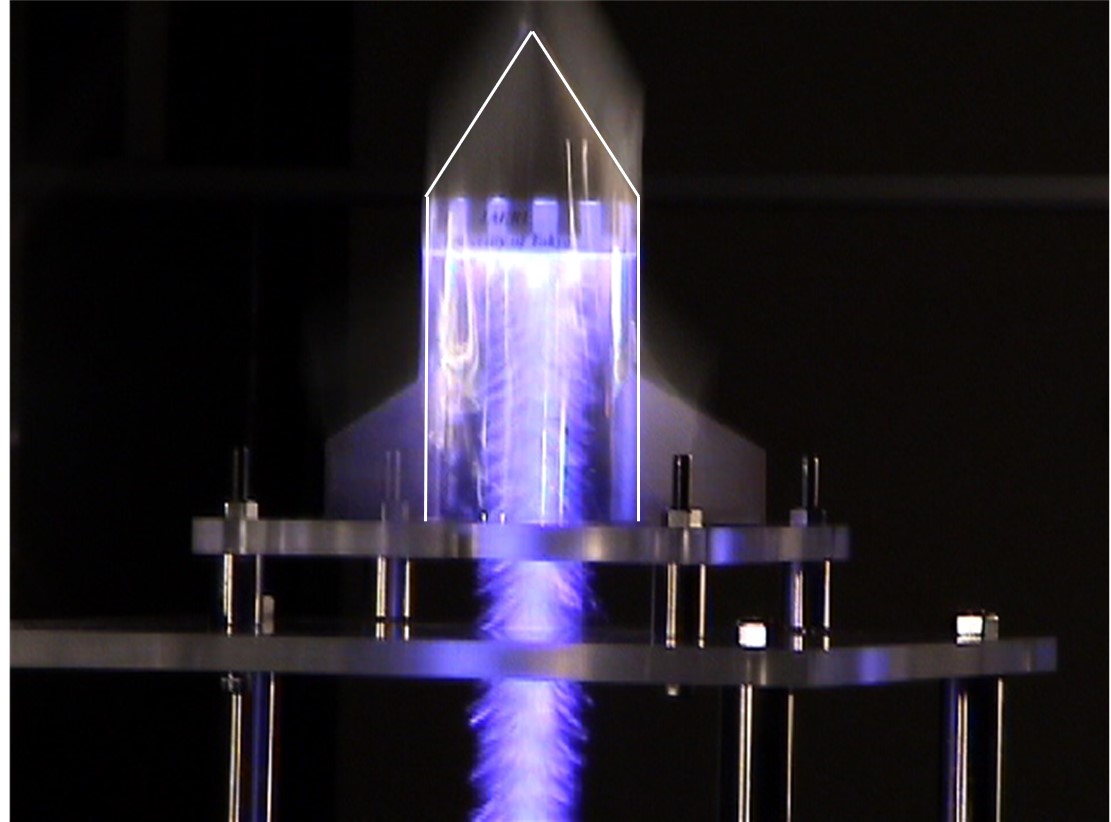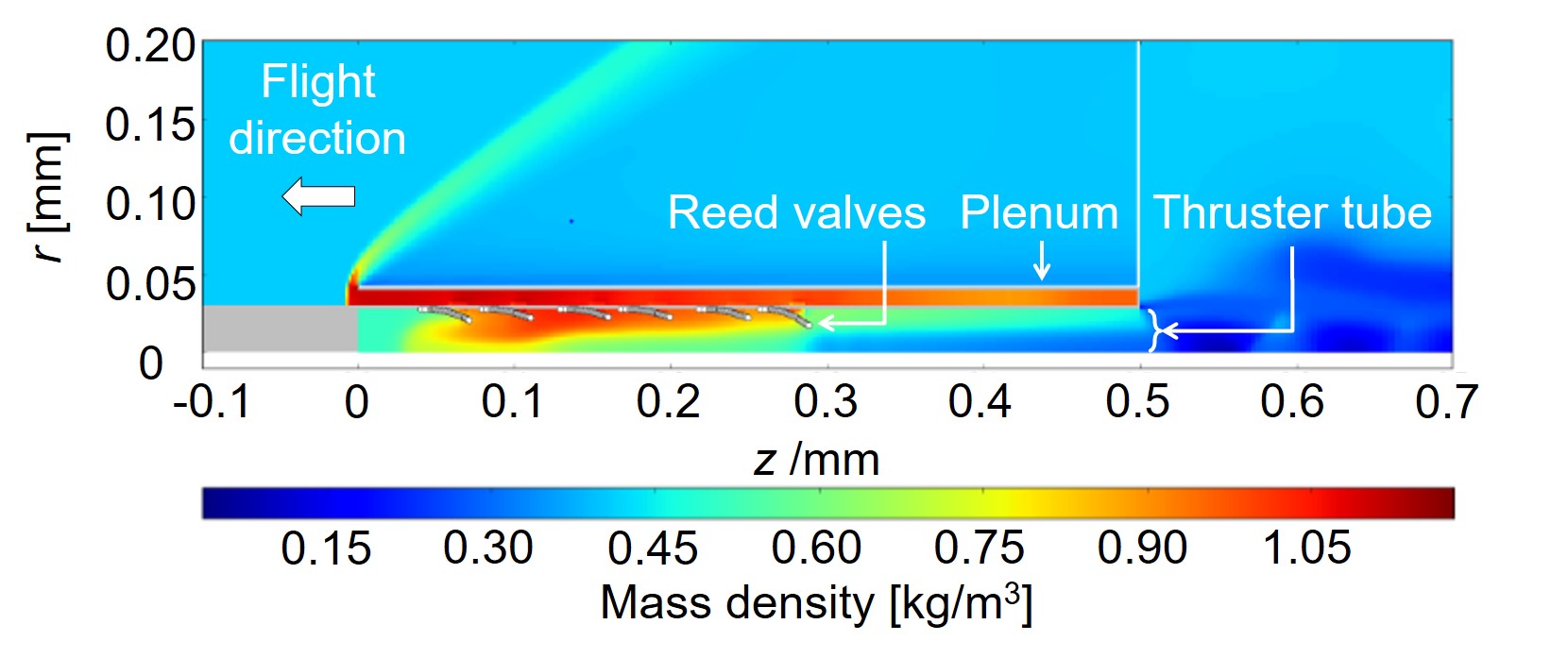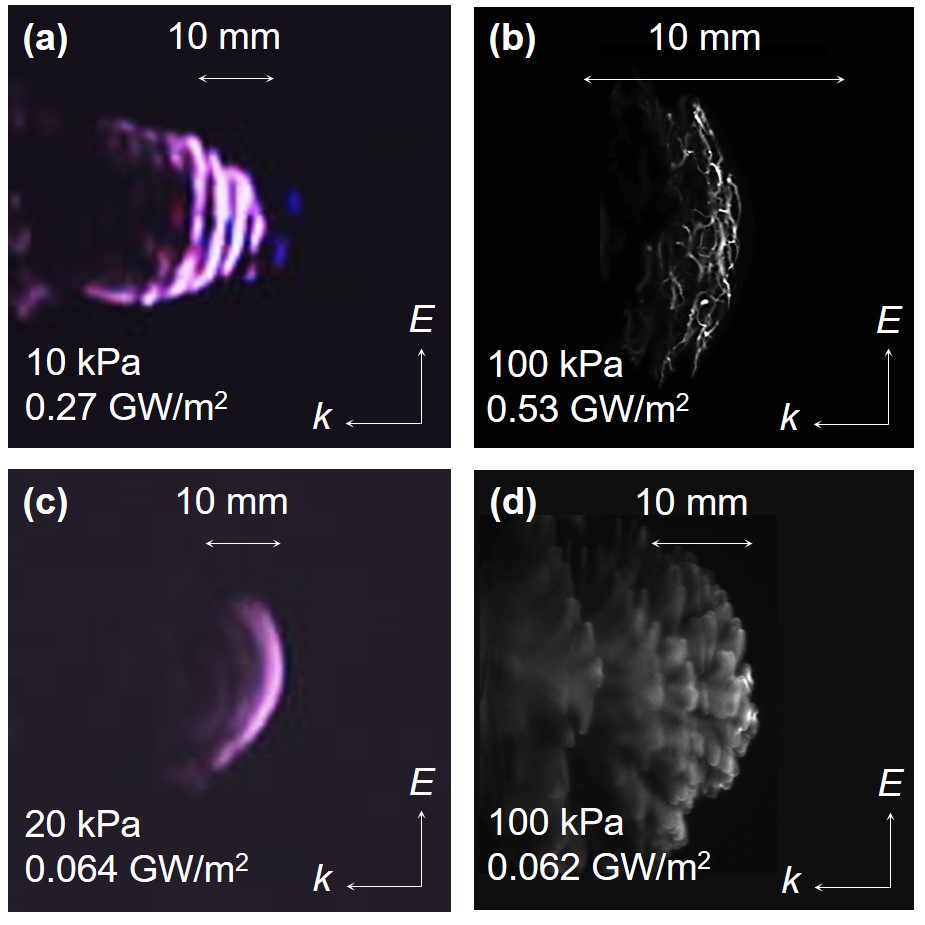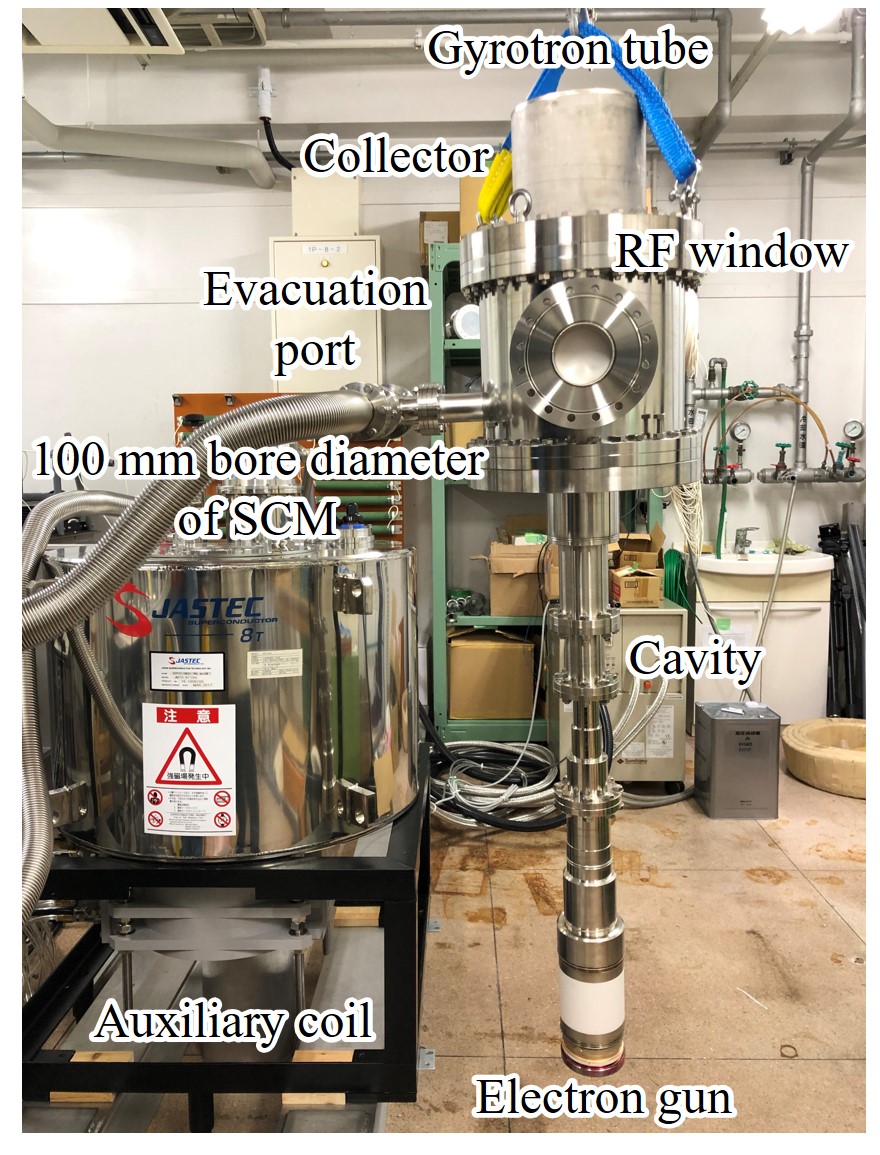
Microwave Rocket is the one that utilizes microwave bemaed energy transmitted from the ground. This type of propulsion is also called "Beamed Energy Propulsion (BEP)". In particular, those that use laser beams have been vigorously researched and developed in the United States and Russia. On the other hand, research on the Microwave Rocket has not progressed much because of the lack of an oscillator that can generate a high-power microwave beam. However, Gyrotron, which can output MW-class power with a single unit, was developed at the Institute of Applied Physics, Russian Academy of Sciences (IAP RAS) in the 1960s. Accordingly, our group demonstrated the principle of the Microwave Rocket in 2003 using a gyrotron of the current National Institutes for Quantum and Radiological Science and Technology research (QST). The photo is the launch test with a 900 kW microwave beam applied to a 10 g miniature rocket.
The main feature is its low cost. Current so-called "rockets" (types that convert the chemical energy of fuel into propulsive energy) have theoretical performance limitations. This is apparent from the Rocket Equation shown by Tsiolkovsky, which gives us the amount that can be carried into space with a single launch. Therefore, if the satellite is transported to space multiple times, the cost will increase accordingly. On the other hand, in the case of Microwave Rocket, since the energy source can be placed on the ground, any heavy object can be theroretically transported to space at once and the ground equipment can be used repeatedly. Therefore, the cost of the access to the space is drastically reduced.
In recent years, member states of the United Nations have advocated SDGs (Sustainable Development Goals), and Microwave Rocket contribute to their realization. Many of the existing rockets were disposable, and some were the types that could cause air pollution. However, Microwave Rocket doesn't need to load onboard fuel and doesn't cause air pollution because it uses the surrounding air for propulsion. Furthermore, the development of Microwave Rocket will enable to construct large structures such as Space Solar Power Systems (SSPS) satellites, and consequently provide clean energy to all humankind.
Based on these characteristics, Microwave Rocket can be said to be an innovative system that expands the sphere of human life and enables sustainable human development. Therefore, in order to realize Microwave Rocket, I am engaged in a wide range of research and development from the elucidation of its propulsion principle to the development of a gyrotron that is indispensable for ground beam stations, using numerical numerical simulations and experiments.
For more details, please take a look at this paper.



